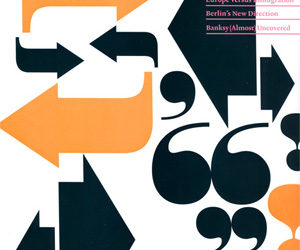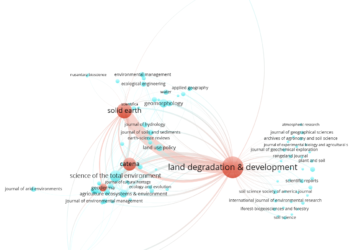Earlier this week, we received a reader comment decrying the use of jargon and overly-complex language in academic papers. Several responses to the comment noted that the research journal is really meant to be a high level conversation between experts, and as I wrote, if you had to start from the basics, then every single paper would be hundreds of pages long.
In the video below, we see neuroscientist Bobby Kasthuri explaining his work to five different people with five different levels of background knowledge: a five year-old; a 13 year-old; a college student; a neuroscience graduate student; and an entrepreneur active in the field that Kasthuri studies. It’s fascinating to watch the language that’s used change, for example, the number of abbreviations that start creeping into the conversations with the experts where the jargon and shorthand is assumed.
The video harkens back to a recent post by Kent Anderson, which talked about the “typographic mind”, and how print is sometimes the ideal mechanism for transmitting complex ideas. As the level of expertise of the audience increases, the value of the video as an explanation tool decreases. It’s also interesting to note that the promise of the research starts to get increasingly hedged as things shift from simple black and white concepts into complex realities. We can recreate the human brain in a computer eventually turns into we probably can’t create the human brain in a computer, once you get into the details.
Discussion
9 Thoughts on "Different Levels of Complexity Require Different Communication Strategies"
One aspect interesting to me is the amount of “misinformation” in this video at the reduced complexity levels.
Great video – it’s fascinating to see the different communication styles that need to be employed for different audiences back-to-back like that. I would add that the messenger is just as important as the medium, and not everyone has the skills to effectively communicate with every audience (or any audience, in some cases).
Also, I remember the comment that you mention in your opening David, and while I can’t speak for the original intention of the poster, I had a different reaction to the comment. It made me think of a previous post here on SK: https://scholarlykitchen.sspnet.org/2015/12/18/speech-is-instinctive-writing-is-hard/. So while I agree that journals are a venue for higher-level communication, I think there is a certain subset of authors who try to use language to obscure potential defects. Some editors are better at seeing through that than others.
Yes, agreed (and in response to Sasa’s comment below). There’s a difference in writing at a high level — using commonly understood jargon and terminology, and assuming the reader has a background in the concepts of the field, and unclear or bad writing. There are certainly a good number of bad habits common to scholarly writing (convoluted use of the passive voice for example), and those should be avoided at all costs. But one can’t simply write a high-level document for experts in a way that makes it immediately accessible to all, regardless of their knowledge level. To me, that takes a different document.
It’s not so much a matter of making an expert document accesible to laymen, but rather of making communication between experts more efficient and economic.
It’s like play calling in football in a sense — complex player movements and actions are coded into simple few-word instructions immediately understandable to everyone with shared background (i.e. playbook).
Similar communication tactics may be applied in any community with a certain degree of shared background.
On the other hand, verbosity has long been considered a sign of high intellect, so from a reputation-centric perspective it’s no wonder at all that it continues to persist and thrive in the scientific literature no matter how inefficient and wasteful it generally is from a communication-centric perspective.
Most times it’s unnecessary jargon, though. Its real utility lies in discipline- and (scientific) community-building, both vital aspects of science for sure, but not so much in explaining things.
This series of exchanges provide a clear illustration of the adjustments good communicators make, from a simple definition of the core concept, using analogies and metaphors (stars and maps), to a conversation using well understood technical language to consider the possibilities and test the limits of the concept. What’s notable in these exchanges is how well the scientist’s own passionate interest in the subject helps him connect with the person he’s speaking to. That level of connection with the interested reader can be missed as easily in plain language texts for lay readers as it is by academics writing for colleagues.
Shannon and Weaver’s transmission theory/model of communication (1949) still gives us all a straightforward look at communication, albeit theirs was mathematical theory. Sender – channel – receiver. I know, I know, many will argue “it’s not that simple.” But really, it does’t need to be that complex, either.
Two observations – 1. The higher the level of incoming expertise, the more the listener talked, engaging with and manipulating the meaning of the course of the resource. So, it went from explanation/instruction to conversation.
2. This also led to the last two discussion branching off into more abstract ideas; the nature of consciousness, the ethics of comparing a male brain connectome to a female brain, the cost and meaning of the endeavor itself.
Once a basic level of mutual understanding is attained, once this connection *between* brains is made, something pretty amazing happens.



